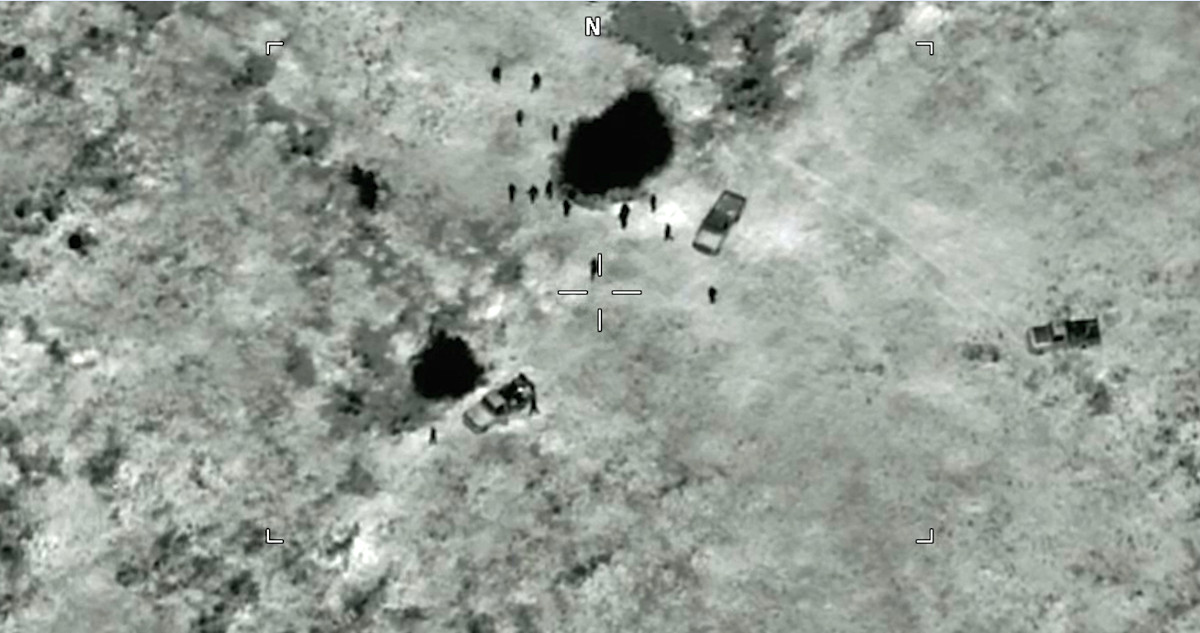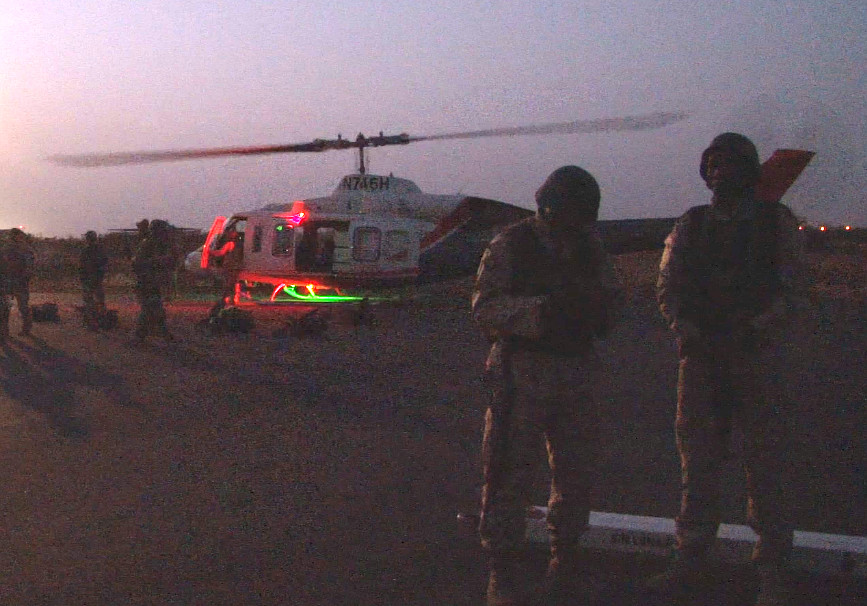The Pentagon recently disclosed the findings from its months-long investigation into an ambush in the West African country of Niger that left four Americans dead and the circumstances that led up that incident. Now, it has decided to release a nearly 23-minute long, unclassified video presentation that combines a digital recreation of the events with both file footage of U.S. military activities in Africa and actual photographs and clips from the mission itself.
Based on the video’s actual filename, the U.S. produced the presentation on March 9, 2018, more than two months before it briefed the public on the results of its review of the ambush, which occurred on Oct. 4, 2017, and crafted more than seven different iterations of visual briefing before settling on this one. The Pentagon has made the video available to the press directly on request, but has not put a full copy online itself.
The presentation includes a number of details that the Pentagon left out of both the initial briefing on the events that it gave the press later in October 2017. This information was also absent from the original public accounting of the final investigation’s conclusions and recommendations, which it presented earlier in May 2018.
The most notable new disclosure is that the Nigerien quick reaction force that arrived on the scene hours after the fighting had begun initially mistook the surviving American and Nigerien forces for Islamic State in the Greater Sahara (ISGS) terrorists and fired on them with heavy, vehicle-mounted machine guns for nearly a minute before realizing their mistake. Thankfully, no one appears to have gotten wounded or died as a result of this embarrassing friendly fire incident, which is likely why the Pentagon decided not to mention it.
The video also explains that when the combined force believed they were about to be overrun, they destroyed their radio equipment, preventing any possible communication with French pilots flying Mirage 2000 fighter jets, which were the first outside friendly forces to arrive on the scene. Those aircraft did not directly engage the ISGS terrorists for fear of hitting the Americans and Nigeriens on the ground, who they could not easily distinguish from the hostile force.

The fast-moving combat aircraft did succeed in chasing off some of the militants by flying at an extremely low level, which we now get to see footage of in this video through the infrared full motion video camera on a U.S. military unmanned aircraft orbiting the ambush area. In addition, we see American personnel on the ground signaling to French helicopters that arrived in the area later and spent approximately 40 minutes trying to determine the location of the remaining friendly forces, which had established a hasty defense in a wooded area next to a swamp.
We now know that at the very end of the skirmish with ISGS, the remaining American personnel assumed they would die and wrote and recorded messages to loved ones on personal electronic devices, likely cell phones. Thanks to the visuals, there’s a better sense of how U.S. Army Sergeant LaDavid Johnson became separated from the rest of the force and remained missing for two days after he had died.

ISGS terrorists also killed Sergeant First Class Jeremiah Johnson, Staff Sergeant Bryan Black, and Staff Sergeant Dustin Wright, all also members of the U.S. Army, as well as a number of Nigerien personnel. The other five Army Special Forces soldiers on the mission, who the Pentagon has not named, survived, but with various wounds. The video offers a harrowing rundown of how the ambush played out from start to finish, at least according to the Pentagon’s findings, and is worth watching from start to finish.
For the first time, we also get to see the contractor-operated helicopters, which The War Zone was first to report had taken part in the response to the ambush, who arrived after the fighting had ended to help collect the dead Americans. File and mission footage appears to show that Erickson, Inc. was responsible for the Bell 214STs in question at the time. U.S. Africa Command had previously identified only Berry Aviation as being in charge of contract airlift, casualty evacuation, and personnel recovery support in Niger and elsewhere in West Africa. Since it does not operate rotary wing aircraft itself, that company likely sub-contracted to Erickson to fulfill this portion of the contract.

The clip identifies the so-called Special Operations Command and Control Element (SOCCE) in neighboring Chad as being primarily responsible for operations in the Lake Chad Basin, as well. The major threat in that region, on the other side of Niger from Tongo Tongo, is the Nigeria-based Boko Haram terrorist group, also known as ISIS-West Africa (ISIS-WA). This headquarters was responsible for approving all U.S. special operations forces missions in Niger, which only reinforces questions we raised after the recent briefing on the Pentagon’s investigation about the strained command structure in the region and whether American personnel there have adequate resources. You can read the rest of our analysis of the publicly available information from that review here.
Still, while it offers important additional details, the video still leaves many questions unanswered about the exact nature of this particular mission and the U.S. military’s activities in North and West Africa as a whole.
Contact the author: jtrevithickpr@gmail.com
